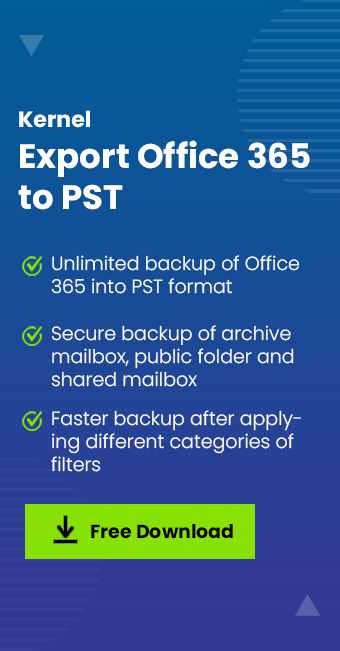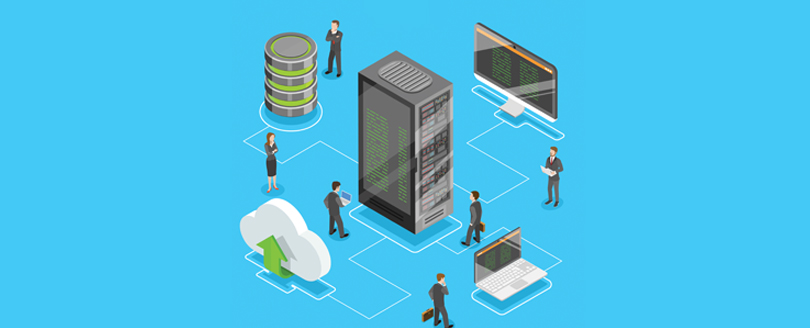Read time: 5 minutes
For any organization, the biggest loss is the loss of important data. That is why data security will always be a priority across all industries. They all insist on backing up their data in a highly secure manner since all their information and assets are at stake. To ensure the security of your important data, you must make the right decision. Designing a backup strategy for your organization is not a piece of cake. It requires a certain amount of knowledge. Also, you need to decide on the right strategy since a few factors like methodologies, objectives, types, and techniques are involved in the process. We will discuss these in detail to help you have a better picture of the process of taking backups:
- The backup rule – 3-2-1 methodology
- Recovery objectives – RPO and RTO
- Backup types – Full, Differential, and Incremental
- Medium of the backup – On-premises and cloud
- Method – A professional backup utility
The best backup rule
Data loss can occur due to various reasons- accidental deletion, malware attacks, physical damage, or hardware failure. The best backup system is the one that can recover data in all these situations.
The 3-2-1 backup rule is the most efficient methodology that all the industry experts swore. This rule simply recommends all companies and individuals keep three (3) copies of their data by storing them in two (2) different storage media while keeping at least one (1) copy stored offsite. It ensures storing all the important photos, files, and documents at multiple storage locations such that they can be restored when required. The idea is to find the right combination of storage mediums depending on the cost, security, flexibility, and accuracy preferred by your organization.
Recovery objectives
A better understanding of the recovery objectives will help you implement a more suitable backup plan in your company. These two objectives must be considered before moving forward:
- RPO- Restore Point Objective
The Restore Point Objective refers to the maximum amount of time the organization can afford to lose its data without facing any major impact. If your last backup was 20 hours ago and you have just experienced a failure, then your RPO is 20 hours. To put it simply, you have lost 20 hours of data. This objective is measured in time, and usually, companies prefer to keep it low. - RTO- Restore Time Objective
Restore Time Objective is the time duration the business will take to recover the data that has already been lost in RPO so that there are no damaging effects on the business productivity. For example, your business can afford to keep the website down for 15 minutes; if the time exceeds, the business will start losing orders. This time (15 minutes) is your RTO.
Types of backups
All the organizations prefer to use a combination of these three types of backup methods-
- Full backup
This is the simplest type of backup where all the selected files and folders are saved in the storage location. Most organizations initially opt for a full backup as it gives complete storage of all data in a single media file. It is a very time-consuming process and needs a large amount of storage space. - Differential backup
Differential backup lies somewhere between a full and incremental backup as it takes a copy of files that were changed after completing the first round of Full backup. Since they store all changes afterward, their size can increase rapidly and become equivalent to a full backup copy. - Incremental backup
An incremental backup focuses on taking the backup of only the changes which have been made since the last backup, be it Full, Differential, or Incremental backup itself. Organizations opt for this one as it is easy and quick as only the changes after the previous backup are stored, resulting in lower storage space.
You can refer to this table to get more clarity on different backup types-
| Full backup | Differential backup | Incremental backup | |
|---|---|---|---|
| 1st Backup | Entire data | Entire data | – |
| 2nd Backup | Entire data | Changes after the 1st backup | Changes after the 1st backup |
| 3rd Backup | Entire data | Changes after the 1st backup | Changes after the 2nd backup |
Backup techniques
Generally, the process of backup is conducted using these two techniques-
On-premises refers to physically storing all the data in different devices like hard drives, servers, disks, tapes, etc., at a centralized location. This backup method is also known as On-site and is considered the most secure, but it is surely expensive.
| Advantages | Disadvantages |
|---|---|
| Offline access | High maintenance cost |
| Better security | Risk of physical damage to the server |
| Low monthly costs | Large capital investment |
| More control over data |
Cloud Backup, which is also referred to as remote backup, is a technique to store any data on online servers to protect them from any kind of errors and failures. With the ever-growing online facilities, organizations prefer this technique due to its flexibility and ease.
| Advantages | Disadvantages |
|---|---|
| Zero to minimal maintenance | Internet connectivity is mandatory |
| Low capital investment | Risk of online threats |
| Automated regular backups | Less ownership of data |
| Flexible for every company |
A professional utility to backup Office 365 data
As Office 365 is widely used in organizations, the security of Office 365 data is important for all organizations. But they often get confused about which software to trust with their Office 365 data. Kernel Export Office 365 to PST is a professional utility known to take the backup of all kinds of mailboxes to save them at the desired location, maintaining the confidentiality and integrity of the data involved. The backup procedure uses a self-explanatory method that gets completed within four simple steps. The users can choose to save selective information only, and the saving destination can be anywhere on the system.
Conclusion
Planning a backup strategy for an organization requires a lot of knowledge about the various aspects related to it. All of them have been discussed in the above article. To begin with, 3-2-1 backup methodology is regarded as the best and must be followed by all companies and individuals. Additionally, you must find out the Restore Point and Restore Time Objectives to plan effectively. A suitable backup type is usually a combination of Full, Differential, and Incremental. Organizations also have to decide between On-premises and Cloud based methods depending upon the cost, risk, maintenance, control, and access. A professional backup tool has also been mentioned for a quick and accurate data backup.








